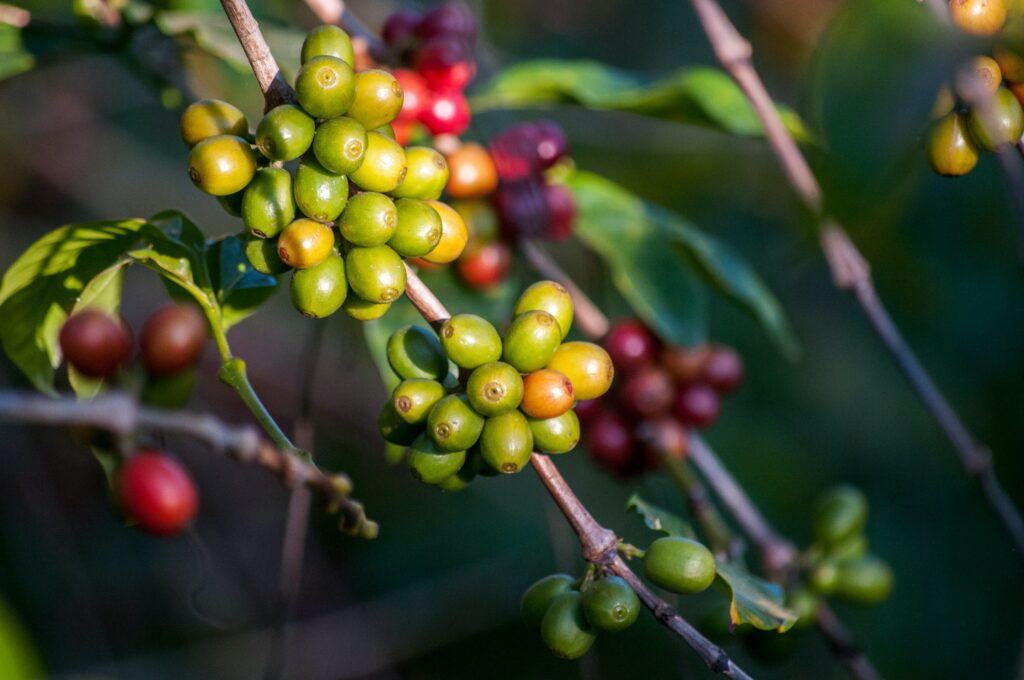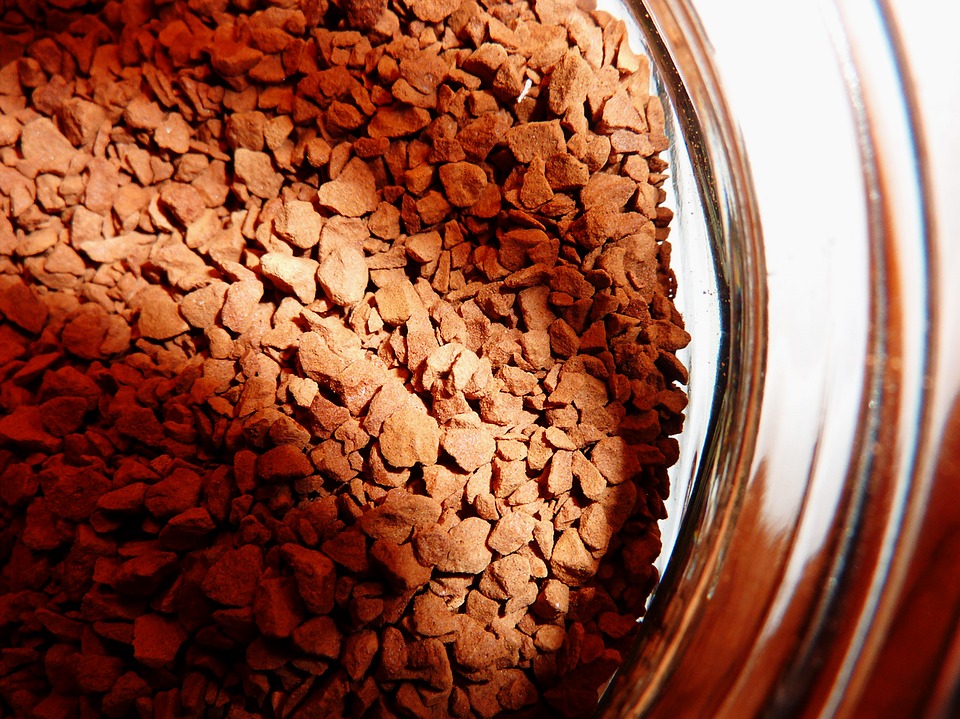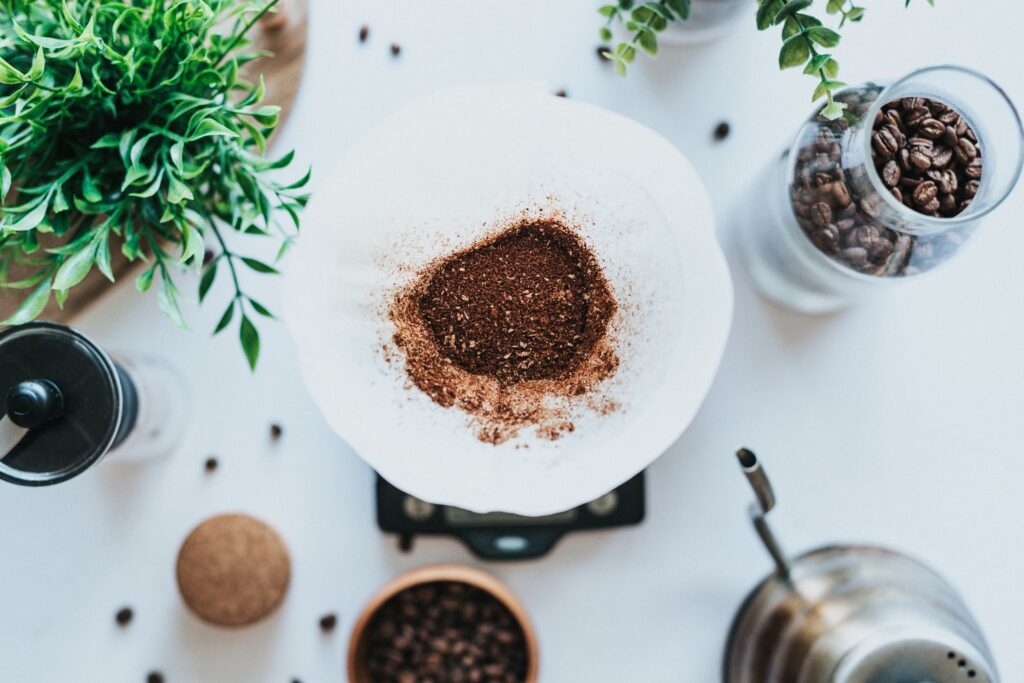coffee beans
-
Posted: December 22, 2021Categories: The ToolsRead more »
Just like how every baker needs bakeware and every artisan needs tools, every home barista needs certain accessories to pull that perfect cup of espresso in a smooth, mess-free and stress-free workflow. Whether you’re a budding barista or a coffee enthusiast learning to brew your own cafe-quality espresso at home, here are eight coffee tools that we recommend getting to help you understand the techniques of coffee-making and perfect your skills.
1. Burr Grinder
[caption id="attachment_20966" align="aligncenter" width="1005"] Opt for a Burr grinder over a blade grinder for your coffee beans if you're ready to upgrade your coffee-making game. Photo by De’Longhi.[/caption] A burr grinder crushes beans between a moving grinder wheel and a stationary plate. The wheel typically has serrated edges while the plate has jagged edges—both work together to give you a consistent and uniform sized ground coffee. In contrast, a blade grinder looks more like a blender. While they’re cheaper, the grind size is typically not consistent. A coffee connoisseur may be able to spot the inconsistent flavour in your espresso from the different tastes produced by finely and coarsely ground coffee. The De’Longhi Burr Grinder lets you enjoy precise control of your brewing process when you get to choose from 16 grind settings. It comes with a user-friendly soft-touch interface, making grinding almost effortless. Shop the De’Longhi Burr Coffee Grinder at SGD 99 or
Opt for a Burr grinder over a blade grinder for your coffee beans if you're ready to upgrade your coffee-making game. Photo by De’Longhi.[/caption] A burr grinder crushes beans between a moving grinder wheel and a stationary plate. The wheel typically has serrated edges while the plate has jagged edges—both work together to give you a consistent and uniform sized ground coffee. In contrast, a blade grinder looks more like a blender. While they’re cheaper, the grind size is typically not consistent. A coffee connoisseur may be able to spot the inconsistent flavour in your espresso from the different tastes produced by finely and coarsely ground coffee. The De’Longhi Burr Grinder lets you enjoy precise control of your brewing process when you get to choose from 16 grind settings. It comes with a user-friendly soft-touch interface, making grinding almost effortless. Shop the De’Longhi Burr Coffee Grinder at SGD 99 or
-
Posted: November 24, 2021Categories: Coffee 101
-
Posted: November 17, 2021Categories: The ToolsRead more »
With Christmas coming up, it’s time to start your festive shopping. Choosing the right gift doesn’t have to be stressful. Instead of focusing on the “perfect” present, an idea would be to start from what your recipient likes, then think of how your gift can add to that. If you have a coffee lover in mind who can’t get enough of coffee, here are 10 festive gift ideas for coffee lovers with a coffee machine that you can use to put a smile on their faces this Christmas. We’ve arranged our list in ascending order in terms of price. Get ready to spread a merry cheer, but with coffee!
1. Whole Beans from JJ Royal Coffee
[caption id="attachment_20507" align="alignnone" width="1024"] Toraja Coffee is JJ Royal Coffee’s best-selling beans. Bold and full-bodied, Toraja coffee packs a punch of dark cocoa nibs and caramel notes with hints of muted grapefruit. Photo from JJ Coffee Royal.[/caption] Part of the joy of brewing homemade coffee is getting to try out different types of coffee beans. Our partner roaster, JJ Royal Coffee, sources high-quality coffee beans from all over Indonesia. They offer many exciting single-origin beans, starting from SGD 11.50 a pack. Grab your friend or loved one a bag (or more) to try. Nothing ventured, nothing gained! Shop all Roasted Coffee Beans from JJ Royal Coffee beans today.
Toraja Coffee is JJ Royal Coffee’s best-selling beans. Bold and full-bodied, Toraja coffee packs a punch of dark cocoa nibs and caramel notes with hints of muted grapefruit. Photo from JJ Coffee Royal.[/caption] Part of the joy of brewing homemade coffee is getting to try out different types of coffee beans. Our partner roaster, JJ Royal Coffee, sources high-quality coffee beans from all over Indonesia. They offer many exciting single-origin beans, starting from SGD 11.50 a pack. Grab your friend or loved one a bag (or more) to try. Nothing ventured, nothing gained! Shop all Roasted Coffee Beans from JJ Royal Coffee beans today.
-
Posted: November 10, 2021Categories: Coffee 101
-
Posted: November 03, 2021Categories: The BeanRead more »
Coffee beans past their expiration will not make you sick; they will just lose their flavour and intensity. If you’ve got more coffee beans than you can brew or are about to throw away those that have expired, repurpose them instead. Old coffee beans can accomplish wonderful things around your house if you give them a chance. Whether you have excess coffee beans you can’t finish or old coffee beans lying around, here are 10 useful hacks to get more value out of your old coffee beans without tossing them. Besides the beans, you can also use old coffee grounds for these tricks to get some extra mileage out of your coffee, reduce waste and save money.
1. Ward Away Pests
Mosquitoes, lizards and cockroaches hate the smell of coffee, so old coffee beans can be ground and used to repel these pests. Place coffee grounds in uncovered bowls or if you’re targeting an outdoor area, sprinkle them around for a natural insect repellent.2. Make Your Plants Happy with Natural Fertilisers
[caption id="attachment_20288" align="alignnone" width="800"] Nutrient-dense coffee grounds also serve as a natural fertiliser for your plants. Photo from Bonnie Kittle.[/caption] Old coffee grounds contain nitrogen, calcium, potassium, iron, phosphorus, magnesium and chromium—great minerals for plant growth. Simply sprinkle coffee grounds onto the soil in your garden or in their pots as a natural fertiliser to help your plants thrive.
Nutrient-dense coffee grounds also serve as a natural fertiliser for your plants. Photo from Bonnie Kittle.[/caption] Old coffee grounds contain nitrogen, calcium, potassium, iron, phosphorus, magnesium and chromium—great minerals for plant growth. Simply sprinkle coffee grounds onto the soil in your garden or in their pots as a natural fertiliser to help your plants thrive. 3. Absorb Unwante
-
Posted: October 27, 2021Categories: Coffee 101
-
Posted: October 20, 2021Categories: The BeanRead more »
It’s easy to get overwhelmed by the endless choices when shopping for coffee beans. To help you navigate the coffee bean market, today we’re taking a step back to discuss the main differences between the two main types of coffee beans: Arabica and Robusta. But first, some quick facts. Arabica beans make up about 60% of worldwide coffee bean production. They grow at higher altitudes and thrive in cooler temperatures of 15 to 24ºC. Arabica beans are primarily grown in South America and Africa. Robusta beans make up most of the remaining 40% of worldwide coffee bean cultivation. They can grow at lower altitudes and thrive in warmer temperatures of 24 to 30ºC. Robusta is mainly grown in Southeast Asia, Africa and Latin America. So, which should you choose? Here are their top differences to help you decide which will suit your taste and lifestyle better.
Taste
Arabica coffee beans tend to have a smoother, sweeter taste with hints of fruits, berries, chocolate or sugar. They come in a wide range of varieties depending on where they are cultivated. Arabica beans can be sweet and soft but also sharp and tangy. The fun part is trying Arabica beans from different regions to see which you like best. [caption id="attachment_20132" align="alignnone" width="800"]
-
Posted: September 22, 2021Categories: The BeanRead more »
You may know India as a tea-drinking nation, but you’ll be amazed to find out about the country’s rich history when it comes to coffee. The drink’s origin dates back to 1600 AD when Baba Budan, a legendary merchant and 16th-century Sufi, went to Mecca on a pilgrimage and smuggled seven coffee beans from Yemen into Mysore, India. Upon arriving in Mysore, Baba Budan planted the seeds in Chandragiri – a hilly region located in the Indian state of Karnataka. It seems like a strange tale, but that’s how India’s coffee culture was born.
Where and How It’s Grown
[caption id="attachment_19254" align="alignnone" width="2560"] India’s coffee farms are pretty small; most are less than 10 acres in size. Photo from Rodrigo Flores.[/caption] Today, many aren’t aware that India is one of the world’s largest coffee producers. Ranked sixth internationally, India accounts for more than four per cent of global coffee production. Coffee farms are found in eight regions, mainly in the southern states. Wet-processed or washed specialty coffees are grown in mountainous areas, such as Baba Budan (yes, Chandragiri became known as Baba Budan thanks to the incredible origin story), Nilgiris, and Shevaroys. Robusta is a lot more common than Arabica (it’s 30 per cent v
India’s coffee farms are pretty small; most are less than 10 acres in size. Photo from Rodrigo Flores.[/caption] Today, many aren’t aware that India is one of the world’s largest coffee producers. Ranked sixth internationally, India accounts for more than four per cent of global coffee production. Coffee farms are found in eight regions, mainly in the southern states. Wet-processed or washed specialty coffees are grown in mountainous areas, such as Baba Budan (yes, Chandragiri became known as Baba Budan thanks to the incredible origin story), Nilgiris, and Shevaroys. Robusta is a lot more common than Arabica (it’s 30 per cent v
-
Posted: August 11, 2021Categories: The BeanRead more »
Do you like your cup of coffee super caffeinated for that extra kick? Is that strong, nutty, earthy flavour important, or do you prefer fruity, slightly more delicate notes? How you answer questions like that will determine which team you’re on: Arabica or Robusta. If you’re in the camp of “less caffeine” and “light and sweet” tasting notes, then consider picking up these five awesome Arabica roasts, available in either (or both) Singapore and Malaysia. Don’t have a coffee machine just yet? Explore our range of De’Longhi coffee machines for top-notch, cafe-quality java, just the way you like it.
Aceh Gayo Arabica
[caption id="attachment_17604" align="alignnone" width="2560"] The Aceh Gayo Arabica is lauded for its aromatic floral taste that delivers a bright and pleasant mouthfeel. Photo from JJ Royal.[/caption] Straight from the Gayo Plateau in Northern Sumatra, Aceh Gayo Arabica is a specialty-grade Indonesian coffee that gives you a balanced, medium-bodied drink.
The Aceh Gayo Arabica is lauded for its aromatic floral taste that delivers a bright and pleasant mouthfeel. Photo from JJ Royal.[/caption] Straight from the Gayo Plateau in Northern Sumatra, Aceh Gayo Arabica is a specialty-grade Indonesian coffee that gives you a balanced, medium-bodied drink.
-
Posted: August 04, 2021Categories: The BeanRead more »
Let’s face it, online shopping is unbeatable for today’s lifestyles, or what many are calling “the new normal”. Of course, there are plenty of good reasons why many still prefer making in-store purchases; you can see the item, feel the item, and at times, even try the item, thus greatly decreasing your chances of dealing with the dreaded buyer’s remorse. But when it’s not convenient to head out or you’re pressed for time, it’s natural to want to make purchases with a few clicks on the Internet. E-shopping is fast, easy, and you don’t even need to leave home. For hardcore java lovers, you’ll be glad to know buying fresh coffee beans online is 100% possible. You just need to know what to look out for.
Price
[caption id="attachment_17397" align="alignnone" width="2560"] The price of a packet of beans says a lot about its quality/cupping score, so pay attention to that. Photo from Bogdan Carmaciu.[/caption] Price isn’t just a number when shopping for coffee beans. It’s directly related to a coffee’s cupping score. So what is cupping, you ask? It refers to a standardised, globally recognised process in which a cup of coffee is evaluated based on aspects such as flavour, acidity, texture, sweetness – just to name a few. The score ranges between one to 100, and by determining a coffee’s quality this way, a price per kilo can be decided as fairly as possible. A score of around 80 is regarded as pretty decent, but since cupping scores aren’t usually listed on the packaging, you’re better off looking at prices and
The price of a packet of beans says a lot about its quality/cupping score, so pay attention to that. Photo from Bogdan Carmaciu.[/caption] Price isn’t just a number when shopping for coffee beans. It’s directly related to a coffee’s cupping score. So what is cupping, you ask? It refers to a standardised, globally recognised process in which a cup of coffee is evaluated based on aspects such as flavour, acidity, texture, sweetness – just to name a few. The score ranges between one to 100, and by determining a coffee’s quality this way, a price per kilo can be decided as fairly as possible. A score of around 80 is regarded as pretty decent, but since cupping scores aren’t usually listed on the packaging, you’re better off looking at prices and
















